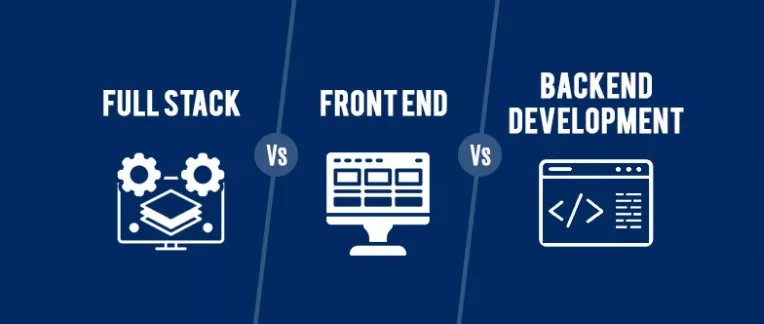In the world of web development, understanding the distinctions between front-end and back-end development is crucial for any full stack developer. As a full stack developer, you are expected to have a comprehensive skill set that encompasses both areas, allowing you to build complete applications from the ground up. This article will explore the key differences between front-end and back-end development, the technologies involved, and what every full stack developer should know.
Understanding Front-End Development
What is Front-End?
Front-end development refers to the part of web development that deals with the user interface and user experience (UI/UX). It involves everything that users see and interact with on a website or application. Front-end developers are responsible for designing and implementing the layout, visual elements, and overall aesthetic appeal of a web application.
Key Technologies
- HTML (HyperText Markup Language): The foundational building block for web pages, HTML structures the content on the web.
- CSS (Cascading Style Sheets): CSS is used to style HTML elements, allowing developers to control layout, colors, fonts, and overall presentation.
- JavaScript: This dynamic programming language enables interactivity on websites. It allows developers to create features like animations, form validations, and interactive maps.
- Frameworks and Libraries: Tools such as React, Angular, and Vue.js streamline the development process, making it easier to build complex user interfaces.
Skills Required for Front-End Developers
- Strong understanding of design principles and user experience.
- Proficiency in HTML, CSS, and JavaScript.
- Familiarity with front-end frameworks and libraries.
- Knowledge of responsive design techniques to ensure compatibility across devices.
Understanding Back-End Development
What is Back-End?
Back-end development focuses on the server-side of a web application. It involves managing the database, server, and application logic that processes user requests and delivers data. Back-end developers ensure that everything on the server runs smoothly, providing the necessary resources for the front end to function effectively.
Key Technologies
- Programming Languages: Common languages for back-end development include Python, Ruby, Java, PHP, and Node.js (JavaScript on the server).
- Databases: Back-end developers work with databases to store and manage data. SQL (Structured Query Language) databases like MySQL and PostgreSQL, as well as NoSQL databases like MongoDB, are commonly used.
- Server Management: Understanding how servers work and how to manage them is crucial. Developers often use server-side frameworks like Express (for Node.js) and Django (for Python) to facilitate development.
- APIs (Application Programming Interfaces): Back-end developers create APIs that allow the front end to communicate with the server, enabling data retrieval and manipulation.
Skills Required for Back-End Developers
- Proficiency in at least one server-side programming language.
- Strong understanding of database management and data modeling.
- Knowledge of RESTful and GraphQL API design principles.
- Familiarity with server and application deployment, as well as security best practices.
The Role of Full Stack Developers
What is a Full Stack Developer?
A full stack developer possesses expertise in both front-end and back-end development. This versatility enables them to work on all aspects of a web application, from the user interface to the server-side logic and database management. Full stack developers are often seen as valuable assets to any development team due to their broad skill set.
Key Responsibilities
- Designing and implementing user-friendly interfaces.
- Developing server-side logic and managing databases.
- Ensuring seamless integration between front-end and back-end systems.
- Collaborating with UI/UX designers to create responsive and aesthetically pleasing applications.
Essential Skills for Full Stack Developers
- Proficiency in front-end technologies (HTML, CSS, JavaScript) and frameworks.
- Strong command of back-end languages and frameworks.
- Knowledge of database management and API development.
- Ability to troubleshoot and debug issues across the stack.



